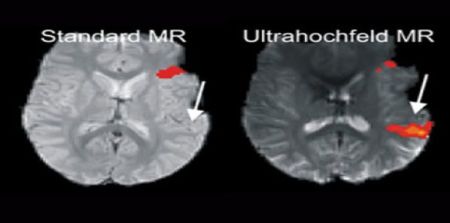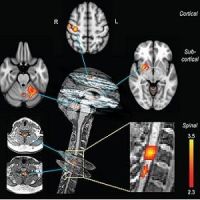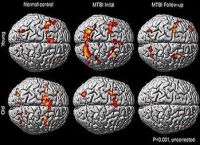New research from the Medical University of Vienna's Department of Neurology reveals that it is possible to pinpoint the areas of the brain that are important for understanding language by using ultra-high field MRI than with conventional MRI. Thus, ultra-high field MRI could be used to protect these areas during brain surgery and avoid any accidental damage to them.
In patients with tumours or brain injuries, the position of language-critical areas can vary considerably. In some cases, the language centres can shift to other regions. There is a risk of injuring these areas during a brain operation. If this happens, the patient may be left unable to communicate. By using functional magnetic resonance imaging (fMRI), it is possible to create a map of the language control centres prior to an operation.
While a previous study has demonstrated the advantages of fMRI-assisted localisation of the motor centres in the brain, this is the first time that investigators have been able to demonstrate the accuracy with which ultra-high-field MRI can pinpoint the two most important language centres of the brain: Wernicke's area that controls the comprehension of language, and Broca's area which controls the motor functions involved with speech production.
According to lead investigator Roland Beisteiner, "Ultra-high-field MRI offers much greater sensitivity than classic MRI scanners, allowing even very weak signals to be recorded in areas that would otherwise have been missed."
The research was carried out in cooperation between the Department of Radiology and Nuclear Medicine and other university departments along with support from one of the research clusters at Vienna's universities. The findings have been published in the journal Neuroimage.
fMRI methods in Austria were first set up and established for clinical use by the University Department of Neurology back in 1992. They are funded through third party finance and have been constantly developed. Numerous pioneering papers have also been published on the improvement of neurological diagnostics using fMRI. In fact, fMRI is the most important non-invasive technique that is used in Austria for the research and clinical exploration of brain functions.
Source: Science Daily
Image Credit: Medical University of Vienna
Latest Articles
fMRI, language centers, brain surgery, Wernicke's area, Broca's area
New research from the Medical University of Vienna's Department of Neurology reveals that it is possible to pinpoint the areas of the brain that are import...



























